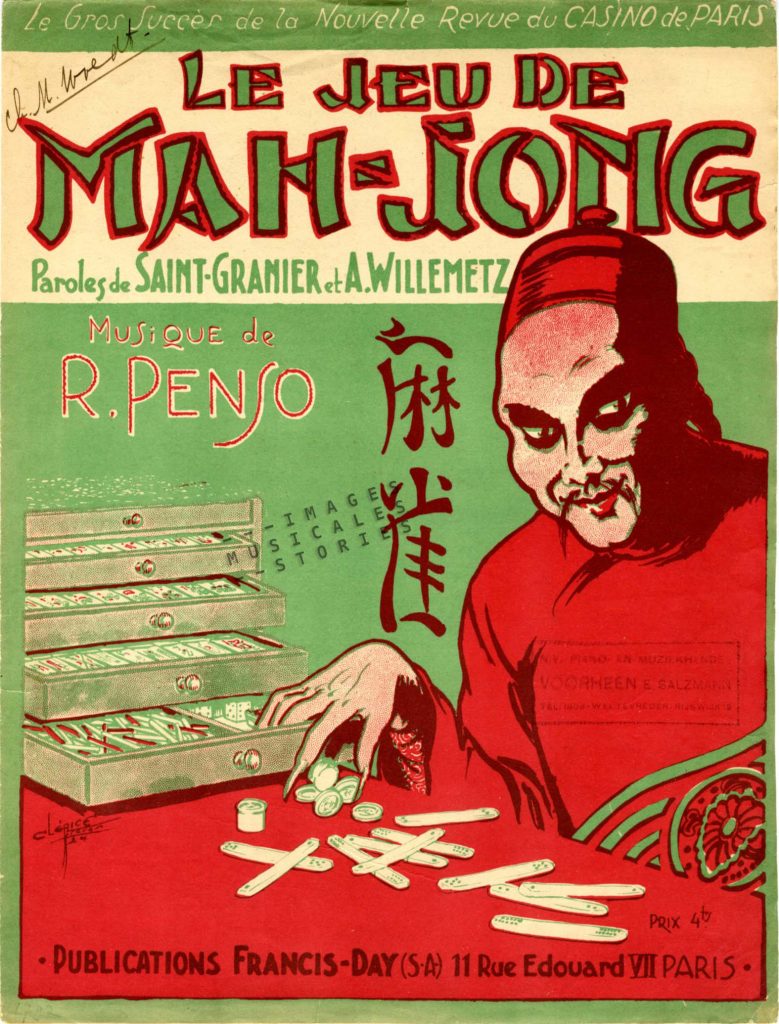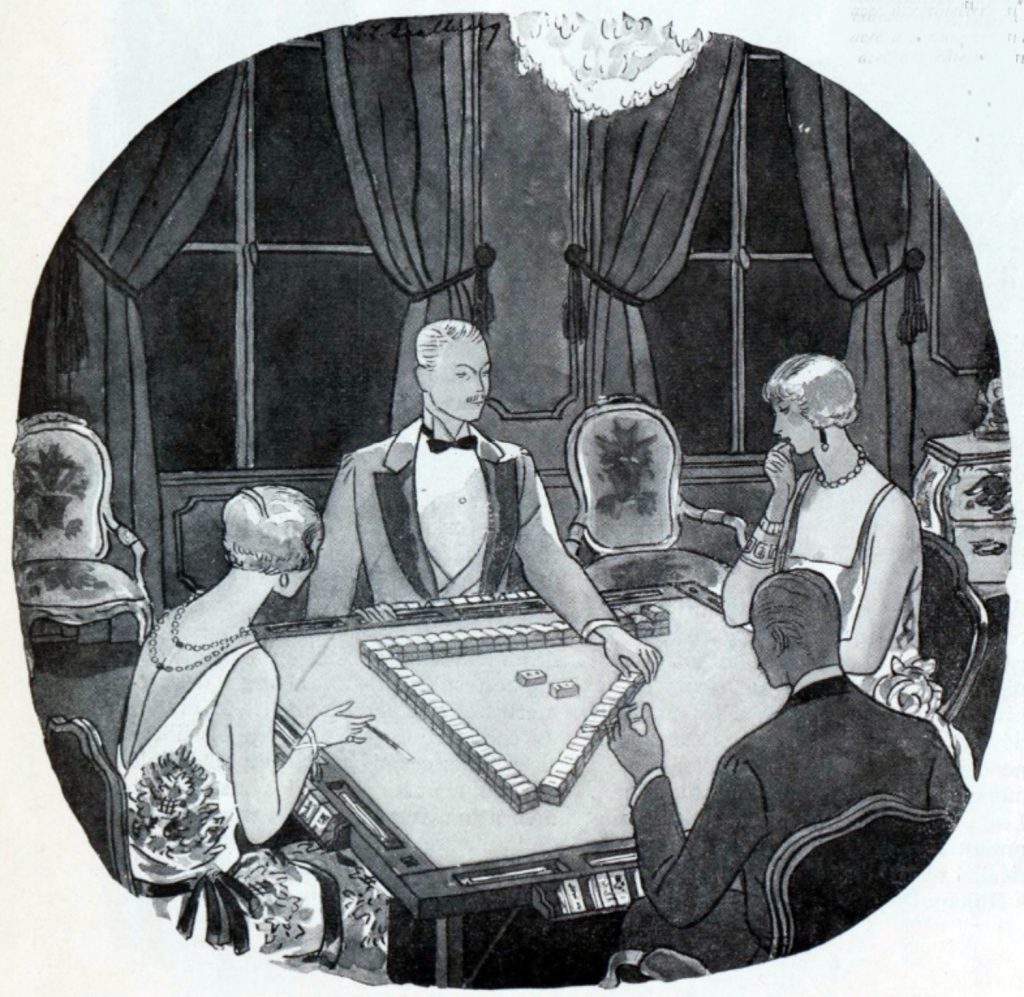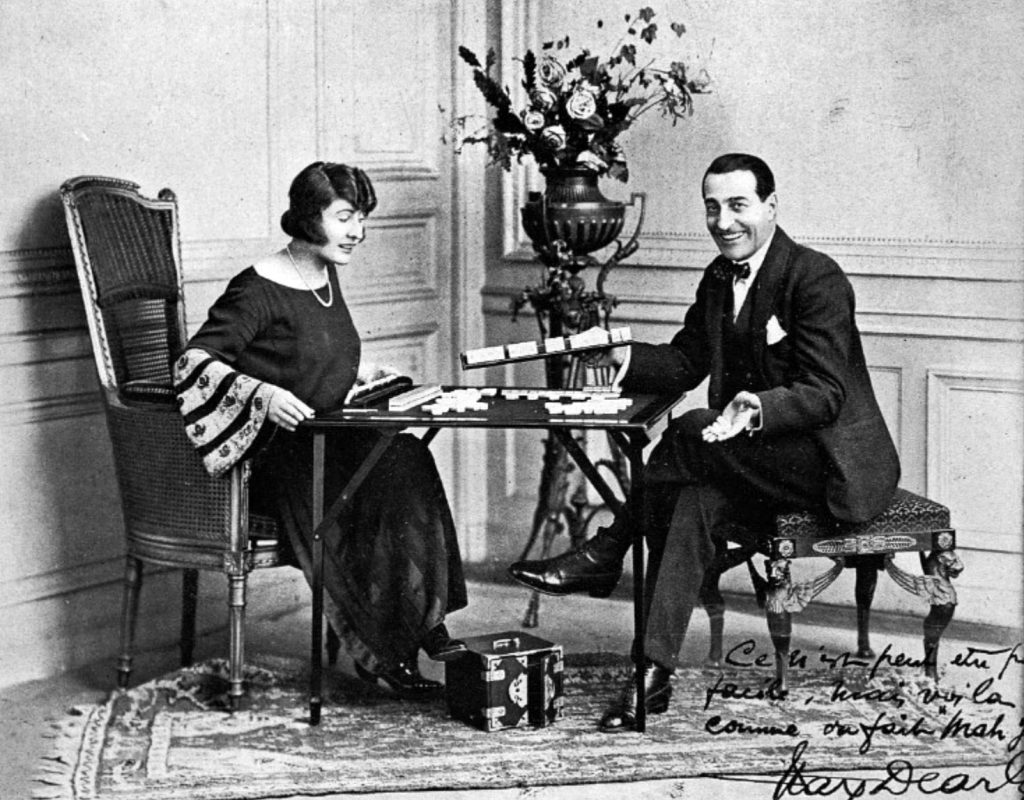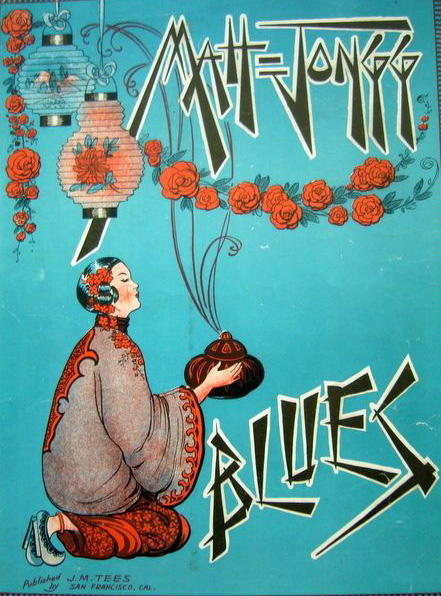
The drawing of the laughing Buddha holding a domino in his hand, gives us reason to believe that the illustrator didn’t know how a game of mah-jong looked like. At that time, in the mid-twenties, the mah-jong was still a novelty in France and reserved for the very rich.

On the cover of ‘Le Jeu De Mah-Jong’ Clérice shows that he had a better understanding of the tile-based game. Mah-jong commonly involves four players and 144 tiles divided into categories such as flowers, bamboo, winds, dragons and seasons. In those days, the tiles were beautifully marked with intricate and colourful designs and sold in elaborately carved oriental drawer boxes.

The French Vogue from January 1924 lyrically introduced the mysterious oriental game to its readers: “The dizzying smell of sandalwood, that one inhales on the banks of the large rivers running through the vast empire of the rising sun, is enclosed in these little dominoes of ivory and bamboo like in a breathtaking incense burner.”
“The origins of the game” Vogue continued “are lost in the mysterious Chinese night”. Indeed, although the history of mah-jong is contested, it is generally accepted that the game evolved in China somewhere in the mid or late 1800s. There it was primarily a gambling game, often played for very high stakes. Westerners first saw the game in Shanghai and Macau. It was then introduced in America and —with a bit of commercial push and marketing flair— it became a craze in the early 1920s. The gambling though was left out. And also, applying the commercial axiom never to sell complicated things, the rules were simplified. From there on it arrived in Europe.

But Vogue concocted a more exciting ‘history‘ to charm its snobbish readers: “For centuries, this scholarly distraction was a privilege for the sumptuous Chinese court and it never went beyond the golden walls of the imperial residence. Only the emperor, the empress, the princes, princesses and their immediate entourage had the right to take out of the priceless boxes, the prodigious little tiles decorated with mysterious signs which allowed them to spend unforgettable hours.”

Imagine that you were a fashionable upper-class Parisienne who wanted to entertain and surprise her guests, wouldn’t you rush to the better shops to buy a luxurious set of mah-jong? It would hurt your wallet a bit though. Even the high-end Vogue marked a mah-jong set as expensive: “Its only disadvantage is its price. But for the lovers of the latest fashion and the newest thrill, certainly a must.” A set costed between 650 and 2.000 francs, the present-day equivalent of about 600 to 1.800 €. That was because traditional mah-jong sets were handcrafted out of the bleached shin bones of cows, or out of ivory. The illustrations on the tiles were also carved and coloured by hand. And of course you couldn’t play mah-jong at an ordinary table. You had to buy “a black lacquered wooden table with a leather top preferably with racks on the side.”

Soon the mah-jong game would become much cheaper as synthetic materials were used and the drawings were stamped on the pieces rather than handcrafted. In December 1924 mah-jong sets were already sold in Paris for 100 francs by Kirby, Beard & C° — a dramatic price drop, though still a great expense for the middle class.

From 1920 on, as the craze started in the US, Abercrombie & Fitch was the first company to sell mah-jong sets. To be able to serve their customers they sent scouts to China to buy as much sets as possible. At a certain point the demand was so high that cattle shinbones were sent to China to be crafted into more sets.

Mah-jong was mostly played by women, such as illustrated by Eddie Cantor with his popular song ‘Since Ma Is Playing Mah Jong’. The song has offensive racial language and makes fun of a housewife neglecting her chores because she is addicted to the game.
There is a perfect scene to conclude this post. It is from the opening of Ang Lee’s film ‘Lust, Caution‘, an espionage thriller set in Shanghai during WWII. Watch how the quickness of the game movements follows the pace of the conversation between the four ladies. You’ll certainly miss a subtitle or two!
